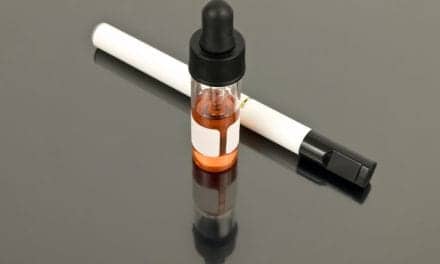Johns Hopkins researchers, working with mice, successfully used losartan (Cozaar), a commonly prescribed blood pressure medicine, to prevent almost all of the lung damage caused from 2 months of exposure to cigarette smoke. The treatment specifically targeted lung tissue breakdown, airway wall thickening, inflammation, and lung over-expansion.
As a result of the experiments, efforts are already under way at Johns Hopkins for a clinical trial of the drug in people with smoking-related chronic obstructive pulmonary disease (COPD). Funding of the trial is from the National Heart, Lung and Blood Institute (NHLBI) and the drug’s manufacturer, Merck & Co.
The findings, which are considered a breakthrough because they mark the first time that a drug already in clinical use has been shown to prevent most serious consequences of smoking in an animal test model, preserving both lung structure and function, appear in the Journal of Clinical Investigation. The study is also believed to be one of the first to extend findings from research on other complex genetic conditions, specifically Marfan syndrome, for which losartan therapy is also being clinical tested, to probe how such treatments can be applied to other complex diseases that damage the lungs in a similar way.
Because this drug is already approved for use in the United States as a safe and effective treatment for hypertension, Enid Neptune, MD, senior investigator for the animal experiments, expects that incorporating them into a COPD treatment regimen would be quick.
Previous research on losartan had shown that the drug, part of a class of medications called angiotensin II receptor antagonists, blocked the action of a key signaling protein called transforming growth factor beta, or TGF-beta for short. Neptune’s own research showed that TGF-beta levels were elevated in lung tissue samples from smokers with COPD, as well as in the lung tissue of mice with Marfan syndrome.
Indeed, this foundational research in 2003 had shown that TGF-beta neutralizing antibodies prevented developmental emphysema in Marfan mice. But until now, Neptune says, no one knew if this biological pathway was simply a consequence of COPD or actually drove it. From a translational medicine standpoint, that bit of information was necessary to gauge losartan’s potential in treating the lung disease.
In the new set of experiments, the Johns Hopkins team first confirmed elevated levels of TGF-beta in the lungs of mice exposed to cigarette smoke and in lung tissue samples of eight smokers with COPD. Biochemical analyses showed that smoke-exposed mice had a fourfold increase in TGF-beta signaling in their lungs than mice exposed to indoor air only; in people, TGF-beta signaling in the COPD sufferers’ lungs was 25% greater than in those of nearly a dozen smokers without COPD. Human tissue samples came from the NHLBI’s National Lung Tissue Research Consortium.
While continuing exposure to tobacco smoke, some mice were treated with either a low-dose of losartan (0.6 grams per liter), or a high dose (1.2 grams per liter.) Another set of smoke-exposed mice was given a neutralizing antibody to TGF-beta signaling, the same treatment that had been used in Marfan mice.
Researchers found major improvements in more than a half-dozen measures of lung damage. Airway wall thickness had doubled from smoking in untreated mice, but was 50% less in those treated with either dose of losartan or with TGF-beta antibodies. Losartan-treated mice showed no signs of lung over-expansion and no signs of increased collagen deposition, a gauge of TGF-beta activity, and had normal levels of elastin-metabolizing enzymes and protein fragments in their air sac walls. Measures of oxidative stress, inflammation and cell death were also better in mice given the blood pressure medication.
Researchers say their next steps, beyond the pilot clinical trial, are further experiments on the role played by TGF-beta signaling in COPD and determining who best responds to anti-TGF-beta signaling treatments. Neptune says this approach represents an early step toward personalized or individually specific treatments for COPD sufferers.
Source: Johns Hopkins Medicine









